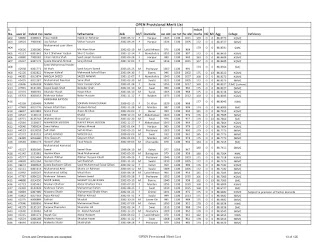CHAPTER NO.10 SOLUTIONS AND COLLOIDS
CHAPTER NO.10 SOLUTIONS AND COLLOIDS
1.
|
In
atmospheric gaseous solution, nitrogen is a
a.
Solvent
b.
Solute
c.
Mixture
d.
none
|
A
|
2.
|
in
ice cream, sugar is:
a.
solute
b.
mixture
c.
solvent
d.
none
|
A
|
3.
|
elevation
of boiling point is a property
a.
additive
b.
constitutive
c.
colligative
d.
none
|
C
|
4.
|
enthalpy
is a measure of the heat of solution at constant
a.
pressure
b.
volume
c.
temperature
d.
number of moles
|
C
|
5.
|
freezing
point of solution is compared to solvent is
a.
higher
b.
lower
c.
variable
d.
remains the same
|
B
|
6.
|
phenol
water system is the example of
a.
completely miscible liquids
b.
completely immiscible liquids
c.
partially miscible liquid
d.
none
|
C
|
7.
|
fog
is the example of
a.
solution
b.
colloid
c.
suspension
d.
none
|
B
|
8.
|
solubility
of a solute depends upon the
a.
nature of solute and solvent
b.
pressure
c.
temperature
d.
all of these
|
D
|
9.
|
which
one of the following is not colligative property
a.
lowering of vapour pressure
b.
elevation of boiling point
c.
depression of freezing point
d.
water potential
|
D
|
10.
|
osmotic
pressure is a …… property
a.
additive
b.
constitutive
c.
colligative
d.
none
|
C
|
11.
|
the
properties which depends on number and not on the nature of solute particles
are called
a.
additive
b.
constitutive
c.
colligative
d.
none
|
C
|
12.
|
which
one of the following is concentration units of solution
a.
percentage composition
b.
molarity
c.
molality
d.
all of these
|
D
|
13.
|
salt
and sugar is example of
a.
coarse mixture
b.
suspension
c.
colloidal dispersion
d.
true solution
|
A
|
14.
|
gum
in water is example of
a.
coarse mixture
b.
suspension
c.
colloidal dispersion
d.
true solution
|
C
|
15.
|
triethyamine
water system is an example of
a.
completely miscible liquids
b.
completely immiscible liquids
c.
partially miscible liquid
d.
none
|
C
|
16.
|
carbon
disulphide and water is example of
a.
completely miscible liquids
b.
completely immiscible liquids
c.
partially miscible liquid
d.
none
|
B
|
17.
|
Solubility
depends upon
a.
Nature of solute and solvent
b.
Pressure
c.
Temperature
d.
All of these
|
D
|
18.
|
Which
one of the following is more soluble in water
a.
NH4NO3
b.
HgCl2
c.
AgBr
d.
All of these
|
A
|
19.
|
For
which one of the following solubility increase with increase in temperature
a.
KNO3
b.
Li2CO3
c.
NaCl
d.
Na2CO4.10H2O
|
A
|
20.
|
For
which one of the following solubility decrease with increase in temperature
a.
KNO3
b.
Li2CO3
c.
NaCl
d.
Na2CO4.10H2O
|
B
|
21.
|
For
which one of the following solubility are not affected with increase in
temperature
a.
KNO3
b.
Li2CO3
c.
NaCl
d.
Na2CO4.10H2O
|
C
|
22.
|
Which
one of the following is dependent on temperature
a.
Molality
b.
Mole friction
c.
Molarity
d.
All of these
|
C
|
23.
|
Osmotic
pressure is independent to
a.
Solute concentration
b.
Solvent concentration
c.
Semipermeable membrane
Non
of these
|
C
|
24.
|
Which
one of the following is due to osmosis
a.
Isotonic
b.
Plasmolysis
c.
Haemolysis
d.
All of these
|
D
|
25.
|
Choose
correct equation
a.
π = RTCM
b.
π = RTC/M
c.
π = RT/CM
d.
π = R/TCM
|
B
|








Comments
Post a Comment